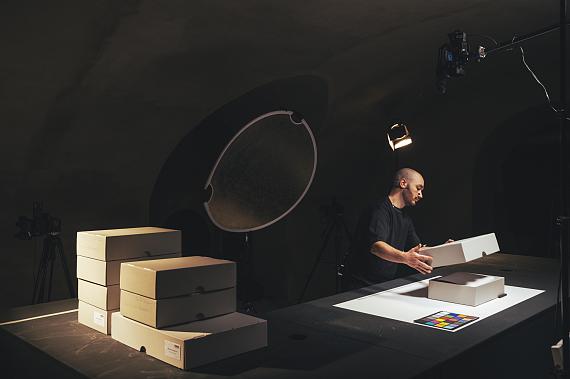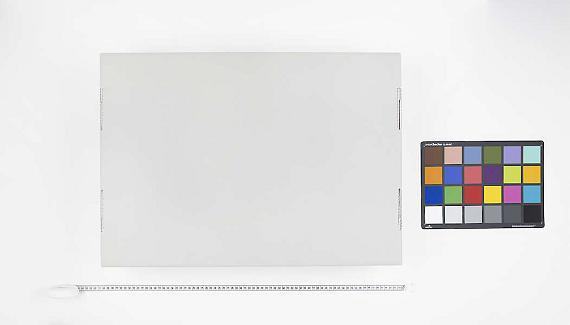
© Pablo Lerma, Maurice Kohl
Pablo Lerma »
THE OPENING. AN INSTITUTION, A DEPOT, THE BOXES
Artist Meets Archive #3: Internationale Photoszene Köln
Exhibition: 12 May – 18 Jun 2023
Fri 12 May 13:00
NS-Dokumentationszentrum
Appellhofplatz 23-25
50667 Köln
+49 (0)221-221-26332
nsdok@stadt-koeln.de
www.nsdok.de
Tue-Fri 10-18, Sat/Sun 11-18

© Pablo Lerma, Maurice Kohl
Pablo Lerma (*1986 in Barcelona / Spain) is an image-based media artist, publisher and educator based in Amsterdam. He studied Painting and Studio Art at the University of Barcelona, General Studies of Photography at the Institut d'Estudis Fotogràfics de Catalunya and Image Text at Ithaca College in New York.
Pablo Lerma's artistic practice develops at the intersection of photography and writing with a focus on visual archives and vernacular materials that address concepts of time, erosion, identity and counter-narrative. His work consist of a rich variety from photographic installations to publications.
He is the founder of the publishing house Meteoro Editions (US-NL), a platform for the creation of art publications with a focus on projects engaging with non-art photography, archives, utopias and fictional representations of the world. He is currently teaching social art practice at the Willem de Kooning Academy in Rotterdam and is a faculty member in media and photography at Webster University in Leiden. For the past ten years he has been a faculty member in photography and social justice at the International Center of Photography in New York and a professor of photography at Kean University in New Jersey.
As an artist, theorist and mediator, Pablo Lerma questions the archive of the Nazi Documentation Centre with its photographic holdings from the National Socialist era for aspects of visibility and invisibility, representation and trauma, and (sub)seeks the historical and contemporary power structures that are fixed in it. Through a reenactment, the memorial's holdings will be activated and the opening, viewing and storage of archival materials will become the subject of a performance.
Pablo Lerma (*1986 in Barcelona / Spanien) ist ein bildbasiert arbeitender Künstler, Verleger und Pädagoge mit Sitz in Amsterdam. Er studierte Malerei und Studio Art an der Universität Barcelona, General Studies of Photography am Institut d'Estudis Fotogràfics de Catalunya und Bild & Text am Ithaca College in New York.
Seine künstlerische Praxis entwickelt sich an der Schnittstelle von Bild und Text mit einem Schwerpunkt auf visuellen Archiven und volkstümlichen Materialien, die sich mit den Konzepten von Zeit, Erosion, Identität und Gegenerzählung befassen. Seine Arbeit nimmt verschiedene Formen an, von fotografischen Installationen bis hin zu Publikationen.
Er ist der Gründer des Verlags Meteoro Editions (US-NL), einer Plattform zur Erstellung von Kunstpublikationen mit Schwerpunkt auf Projekten, die sich mit nicht-künstlerischer Fotografie, Archiven, Utopien und fiktiven Darstellungen der Welt befassen. Derzeit ist er Dozent für soziale Kunstpraxis an der Willem de Kooning Academy in Rotterdam und Fakultätsmitglied für Medien und Fotografie an der Webster University in Leiden. In den letzten zehn Jahren war er Fakultätsmitglied für Fotografie und soziale Gerechtigkeit am International Center of Photography in New York und Professor für Fotografie an der Kean University in New Jersey.
Pablo Lerma befragt als Künstler, Theoretiker und Vermittler das Archiv des des NS-Dokumentationszentrums mit seinen fotografischen Beständen aus der Zeit des Nationalsozialismus nach Aspekten von Sichtbarkeit und Unsichtbarkeit, Repräsentation und Trauma und (unter)sucht die historischen und gegenwärtigen Machtstrukturen die darin festgelegt sind. Durch ein Reenactment sollen die Bestände der Gedenkstätte aktiviert und das Öffnen, Sichten und Verwahren von Archivalien zum Gegenstand einer Performance werden.